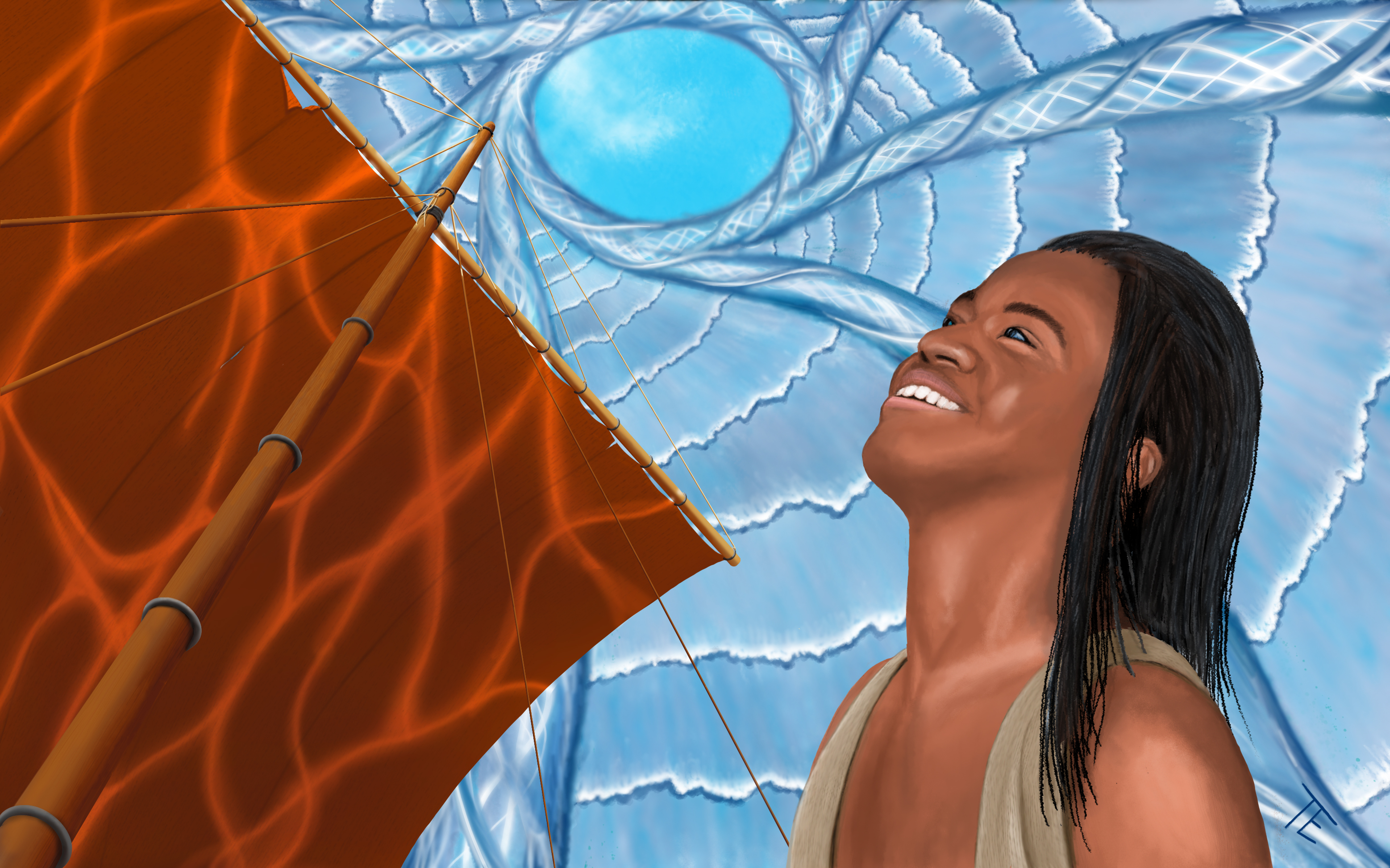Remove these ads. Join the Worldbuilders Guild

The Ocean
Inspiration
Created by
People
The History of The Ocean so far
Humans have put very little effort into mapping the ocean below anchor depth, and therefore have as yet no inkling that a great civilization of cetaceans once dominated the world. That civilization ended abruptly through a catastrophic event that was fatal to all ocean-based life with sufficient water affinity. The chok, lacking that affinity, survived the extinction, and the tkevsas had just enough warning to survive by leaving the ocean entirely.
Freshwater life was less affected by the event, and inland ecology was almost unscathed. An evolutionary branch of the great apes produced a species virtually indistinguishable from humans. Being unable to rely on the ocean as a food source, their pattern of spread was limited to the interior of the three joined continents. Migration to coastal areas was inevitable, however. That leap arose from a cultural split within the easternmost human settlements, the losing side following a river to its ultimate entry into the ocean. Those humans soon developed the ability to travel by sail, spreading their influence across tiny scattered islands and initiating a 10,000-year-long era of ocean-based civilization.
The discovery of a volcanically active archipelago drastically changed that civilization--with a source of energy readily available, and a growing body of knowledge of how to control it, an industrial revolution kicked in. For two milennia the era of machines has existed uneasily alongside the traditional nautical way of life, but now a new technology is bringing them into direct conflict.
Current Species & Cultures
In order from most to least significant to the story:
1. Human. Confined to the interior of Europe, Africa, and Asia, except for this one group, which has spread themselves out in the western Pacific ocean.
2. Szageki. Desert-dwelling lizards descended from eusocial ancestors, now hunter/gardeners living in the bowl of a collapsed magma chamber.
3. Duryo. Large, flightless birds once found throughout the Cluster Islands, their population has collapsed to a few hundred. Because they cannot fly, they were at first not subject to the humans' taboo against eating birds, and were hunted to the brink of extinction. The remaining duryos are bred as beasts of burden--and perhaps for bragging rights. Captive duryos are very angry, and only a brave few humans have taken up the challenge of raising them.
4. Chok. A symbiosis in which certain species of bryozoa grow around the body of a cephalopod with a mild distaste for water. Their shape is quite malleable, and they are as comfortable out of the water as in it. They are concentrated in the Indian ocean, recently spreading out into the local Pacific and still only rarely crossing paths with humans. They collect things they find interesting and store them in coral atolls.
5. Eehur. Long-limbed primates inhabiting an island across the unexplored Southern Gap, they have little in the way of technology but weave scarves prized by humans.
6. Tkevsa. Huddled on this little chain of volcanic islands, terrified the ocean will kill them, flying from one island to the next as the plate scoots across this little hot spot.
7. Deeps-dweller. Tubeworms planted on the seafloor, while individually lacking developed nervous systems, together form a network that supports self-awareness.
8. [no name yet]. Giant kangaroos who were never killed off because there never was a land bridge from Asia. They are nomadic foragers who fly kites.
1. Human. Confined to the interior of Europe, Africa, and Asia, except for this one group, which has spread themselves out in the western Pacific ocean.
2. Szageki. Desert-dwelling lizards descended from eusocial ancestors, now hunter/gardeners living in the bowl of a collapsed magma chamber.
3. Duryo. Large, flightless birds once found throughout the Cluster Islands, their population has collapsed to a few hundred. Because they cannot fly, they were at first not subject to the humans' taboo against eating birds, and were hunted to the brink of extinction. The remaining duryos are bred as beasts of burden--and perhaps for bragging rights. Captive duryos are very angry, and only a brave few humans have taken up the challenge of raising them.
4. Chok. A symbiosis in which certain species of bryozoa grow around the body of a cephalopod with a mild distaste for water. Their shape is quite malleable, and they are as comfortable out of the water as in it. They are concentrated in the Indian ocean, recently spreading out into the local Pacific and still only rarely crossing paths with humans. They collect things they find interesting and store them in coral atolls.
5. Eehur. Long-limbed primates inhabiting an island across the unexplored Southern Gap, they have little in the way of technology but weave scarves prized by humans.
6. Tkevsa. Huddled on this little chain of volcanic islands, terrified the ocean will kill them, flying from one island to the next as the plate scoots across this little hot spot.
7. Deeps-dweller. Tubeworms planted on the seafloor, while individually lacking developed nervous systems, together form a network that supports self-awareness.
8. [no name yet]. Giant kangaroos who were never killed off because there never was a land bridge from Asia. They are nomadic foragers who fly kites.
Find your way!
Resources
WHO WE ARE
LEGAL
Our Shop
Development
EVENTS
REACHING OUT
A BIG THANK YOU
To all our Our Patrons for their unwavering love and support.
For the amazing images. His Titanship Christopher Dravus of Ironrise Games, Our Revered Deity Basic Dragon / Rin & His Majesty Caeora